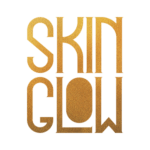A chemical peel is a resurfacing treatment, that uses active ingredients in a chemical solution. It is applied on your skin with the aim of removing the superficial layers of the existing skin to promote the growth of new, smoother, healthier skin.
For a novice it might sound concerning, but don’t worry, you’re in safe hands. Before getting concerned you need to know that there 3 types of peels: superficial, medium and deep peels.
Superficial and medium peels are considered very safe treatments, with very low risk and proven results, as long as they are performed by a trained, qualified professional. Usually, they can be performed as a course and can be repeated regularly, without any risk concerns and have limited downtime.
Deeper peels, penetrate deeper layers of your skin and are recommended for complex conditions. The results are longer term versus the superficial and medium ones, but they require a recovery period and significant down time. We advise to have them performed only by medical professionals.
Chemical or natural ?
Nowadays, Skincare is reaching, newer, higher levels of active ingredients. The industry has an abundance of products, like the acids, a variety which can be seriously intimidating especially when are so many types to choose from.
Some most popular acids found in skincare routine products are glycolic acid (AHA), salicylic acid (BHA) and lactic acid (AHA). All these are considered superficial chemical peels and deemed to be safe to most skin types.
They all sound very chemically complex substances, but there are few interesting facts to know before getting worried. Glycolic acid is an anti-ageing champion derived from sugarcane. Salicylic acid is an oil-soluble acid, naturally found in willow tree. Lactic acid can be naturally found in our muscles, is a by-product of the anaerobic respiration, produced by bacteria in yogurt and our guts.
Especially with the advent of budget-savvy, off-shelf, no-frills brands such as Ordinary, the chemical peel treatment has become more accessible and more popular to larger number of beauty aware public. From here, there are a number of issues in terms of use and expectations these products promise.
What are the chemical peels best for ?
Acids can work magic on your skin tone and brightness with the condition of selecting the right ones for your skin.⠀⠀⠀⠀⠀⠀⠀⠀⠀
Salicylic acid has earned the crown of Gold standard in treating acne. It is one of the best solutions to help you deal with acne because it can reduce inflammation, control sebum production, minimizing the size of the spots. It can also unclog the pores and trigger a gentle exfoliation without causing any irritation. It is a beta hydroxy acid which is oil-soluble. That means it can penetrate through the sebum, deep inside into your pores. Unlike it, glycolic acid is water soluble and works superficially.
This wonder acid has a role in killing bacteria in acne, having an antimicrobial effect also. For persons with oily skin, salicylic acid can help in minimizing oil production and rebalancing your skin sebum production.
Blackheads….guess how can we make it disappear? Salicylic acid that has the ability to penetrate inside the pores and clear out pore clogging debris which creates those most hated blackheads, but also whiteheads.
Glycolic acid is a pigmentation and an anti-ageing champion! Glycolic acid is an alpha hydroxy acid, one of the most popular and time-tested peeling acid. Clinical studies have demonstrated its efficacy in treating pigmentation, chrono and photo-ageing and melasma! It works miracles on those fine lines and stimulating new collagen induction, a true best in-class chemical peel! Glycolic acid dissolves and exfoliates surface dead skin cells and has hydrating benefits. It will help restore moisture and plumpness, revitalizing dull skin and reducing wrinkles.
Lactic acid, the natural occurring acid has proven results in treating age spots, superficial hyperpigmentation and rough texture, along with fine lines can be improved with the help of lactic acid. It acts as an exfoliant, dissolving damaged skin cells and promoting new layers of epidermis.
Mandelic acid, another superficial AHA, has its origins in the bitter almonds. It is one of the gentler exfoliator in the AHA family, treating your skin with limited irritation. Mandelic acid has proven its efficacy in treating superficial wrinkles and fine lines, improving skin texture, acne and hyperpigmentation.
Medium chemical peels include Jessner and TCA. Jessner peels are good for oily, acne prone skin. TCA is appropriate for more intense sun damage, pigmentation and deeper lines and wrinkles. TCA also can be beneficial for those who have very thick, congested skin.
Few considerations when choosing your chemical peel
Chemical peel treatments are very effective and efficient in addressing a various range of conditions. They have been researched proven to deliver the expected results. Although they have limited downtime and are relatively safe to use, we do recommend you seek professional advice before deciding on such a treatment.
There are a number of factors you will need help with in order to get the results you want.
The most important ones are the type of acid to use for your condition and the concentration of the product used. Though majority of the chemical peels are labelled the same and contain the same ingredient there are still major differences an untrained user might not understand. The concentration, quality of the active ingredient and quantity of support ingredients, will directly impact the end result and the condition of your skin.
Everyone’s skin reacts slightly different to the chemical peels. After your first treatment you might experience a sensation of tight, dry skin, followed by the peeling process that involve scaling for few days after the treatment. If you never had a chemical peel before, scaling might be more visible.
Light chemical peels achieve noticeable results when they’re done as a course of 4-6 sessions. Single treatments are not recommended as they rarely achieve the desired outcome.
A must do after any chemical peel treatments, use SPF and avoid sun exposure. Sun exposure needs to be limited for two weeks following a chemical peel. While it regenerates, your new skin is very sensitive to sun exposure and damage can occur if not protected.
Best periods to start your chemical peel course is in early spring, while your whole body revives and starts preparing for most active period of the year, including the sunny holiday season and in the autumn, after sun exposure is over and the risk of sun burn is lower.
The treatment
In our clinic we only perform light chemical peels, which can be categorized as superficial and medium peels.
Our skin peel treatment start with a consultation. We assess the skin condition and the suitability of the chosen treatment. If needed, our experienced therapists will make a tailored recommendation for the exact needs of your skin. Also we always seek to maximize the results you would like to achieve.
The treatment session last approximately 45 minutes. It includes a skin cleansing, pre- peel preparation, the peel application and a post peel LED therapy. This is used to reduce and prevent any redness and the post peel skin preparation, with vitamins, hydrating factors and SPF protection.
During the application of the light chemical peel, depending on your pain threshold, you might feel a mild stinging or burning sensation. This is only temporary.
We always recommend having a course of 4-6 treatments to maximize results, especially if a combination treatment is preferred.
And most important, always wear SPF sun protection! It’s the most important skincare routine that everyone should have.

